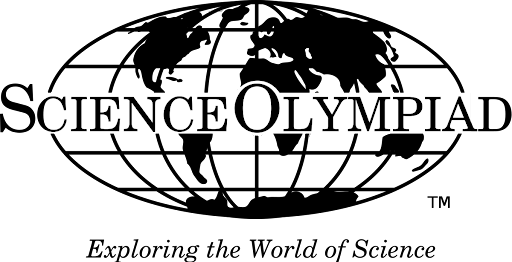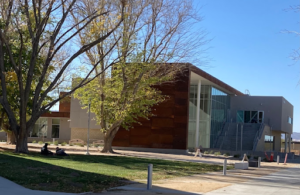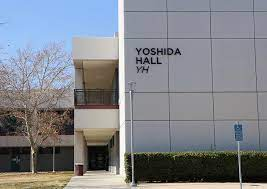
Science Olympiad
by Tarisha Hasan
What is the Science Olympiad?
Science Olympiad is the premier team STEM competition in the nation, providing standards-based challenges to 6,000 teams at 425 tournaments in all 50 states. Science Olympiad competitions are like academic track meets, consisting of a series of 23 team events in each division (Division B is middle school; Division C is high school). Each year, a portion of the events are rotated to focus on genetics, earth science, chemistry, anatomy, physics, geology, mechanical engineering and technology. By combining events from all disciplines, Science Olympiad encourages a wide cross-section of students to get involved.
The competition is divided into several events, which vary every year. It is designed to test science knowledge in various ways, including (but not limited to) scientific design, tests, and build events. Certain events are more time-consuming and intensive than others: for example, Rollercoaster, where you build a stylized ramp for a ball to roll down for a target time, and Flight, in which teams build a rubber-band powered airplane vs. an event like Fast Facts, which is more a test-based “core knowledge” event. The more events your team participates in and the more events you finish in the top three places, the higher your team’s ranking.
Regional competitions typically involve schools from a specific region, usually within the same state. Our State competition takes students from schools all over California, and Nationals will likely involve teams from every single state in the United States. The experience is highly rewarding, and it can be a valuable addition on applications one may have for colleges, internships, and future jobs. With that in mind, I want to provide a thorough review of this year’s competition so that students can get a better idea of what the competition entails. Before we get started, I would like to thank and congratulate all participants in this year’s Science Olympiad competition from both Division B (middle school) and Division C (high school).
What happened on this year’s trip?
The competition this year took place at Antelope Valley College, which is about an hour northeast from the Science Academy/EVHS campus. Both Divisions B and C camped outside of Yoshida Hall to gather, prep, and give each other support. Most events (except for Green Generation B/C, Dynamic Planet B/C, Roller Coaster B, It’s About Time C, Flight B/C, Storm the Castle B, Trajectory C, Wifi Lab C, and Sounds of Music B) took place in either Uhazy Hall (UH) or Sage Hall (SH). It was quite a large campus, so all participants were provided with maps in order to navigate the competition properly. Very few events this year seemed to be available to both the middle and high school divisions, with most events being exclusive to one division or another.
Although Antelope Valley College might not be that well known to students, it was nevertheless a huge campus, making it very easy to get lost, so we found that it’s always important to leave yourself plenty of time to get to your events. The college buildings contained many fascinating things, such as an anthropology exhibit, professional lecture halls, and well-equipped chemistry labs, so between events, we definitely did some sightseeing.

Image #1: Map of the Antelope Valley Campus
Personal experience
Because of the events I selected, my first event wasn’t until the afternoon at 1:20 pm. Luckily, the vending machines worked fine, and the snacks that we brought on the trip were also decent, which gave me an excuse to try matcha-flavored Choco Pies for the first time.
One of my first events was the Write It, Do It event, which is both fun and a bit nerve-wracking. Teammates are placed in separate rooms; one teammate writes down instructions for building an unnamed and unpictured item, and the other has to correctly build it. Although I will admit I’m not the best architect in the world, I still think I did a pretty decent job building the compound object from my teammate’s instructions. The materials were pretty fun to fidget with and link together, and the wooden blocks made almost perfect Jenga pieces. Even then, when the time came to build the actual object, it reminded me of trying to follow a recipe shoved into Google Translate multiple times before being translated back into English.
Fast Facts, a core knowledge test event, which was overall a pretty successful event for us, had some name categories that were challenging, including parts of the brain and anatomy. Unfortunately, I completely bombed the Biotechnology category, so those are areas I’ll want to study more in the future.

Image #2: Sage Hall, where I did the Write It, Do It event.
Why should you participate in Science Olympiad?
Despite the rigor that the competition has, it is well worth the effort. Not only is it fun, but participation in the event, even if you don’t place at the top or even the top three, will look excellent on a college application. These days, colleges look for students who are well rounded and capable of a high level of endurance in times of difficulty. Participants in the competition have the potential to win huge prizes: not just trophies, medals and plaques, but also scholarships, which can make going to college a lot more economically feasible. This, in turn, can allow you to pursue the career you want, especially if it’s a STEM career. If you’re interested, you should talk to Mr. Nuno and join his Per. 7 Science Olympiad elective next year.

Image #3: Yoshida Hall. Most of us camped out near the entrance of this place, more precisely, near the tree shown at the left of the hall
Science Olympiad Trivia
- The first recorded Science Olympiad competition was held on Saturday, November 23, 1974 in Laurinburg, North Carolina at St. Andrew’s Presbyterian College.
- The list of events changes every year, but the core categories remain the same: Core Knowledge, Build, and Hands-On. Hybrid events can be a combination of any of these categories.
- And finally, a word of advice:
- If this is your first Science Olympiad competition, I would highly recommend selecting an event that is Core Knowledge only; these events only require research in order to completely understand the requirements.
- If you are good at building, you may want to take on Build events. They are rewarding to design and often come in the form of models of practical everyday objects. However, these events can be time-consuming, so take them as early as possible.




